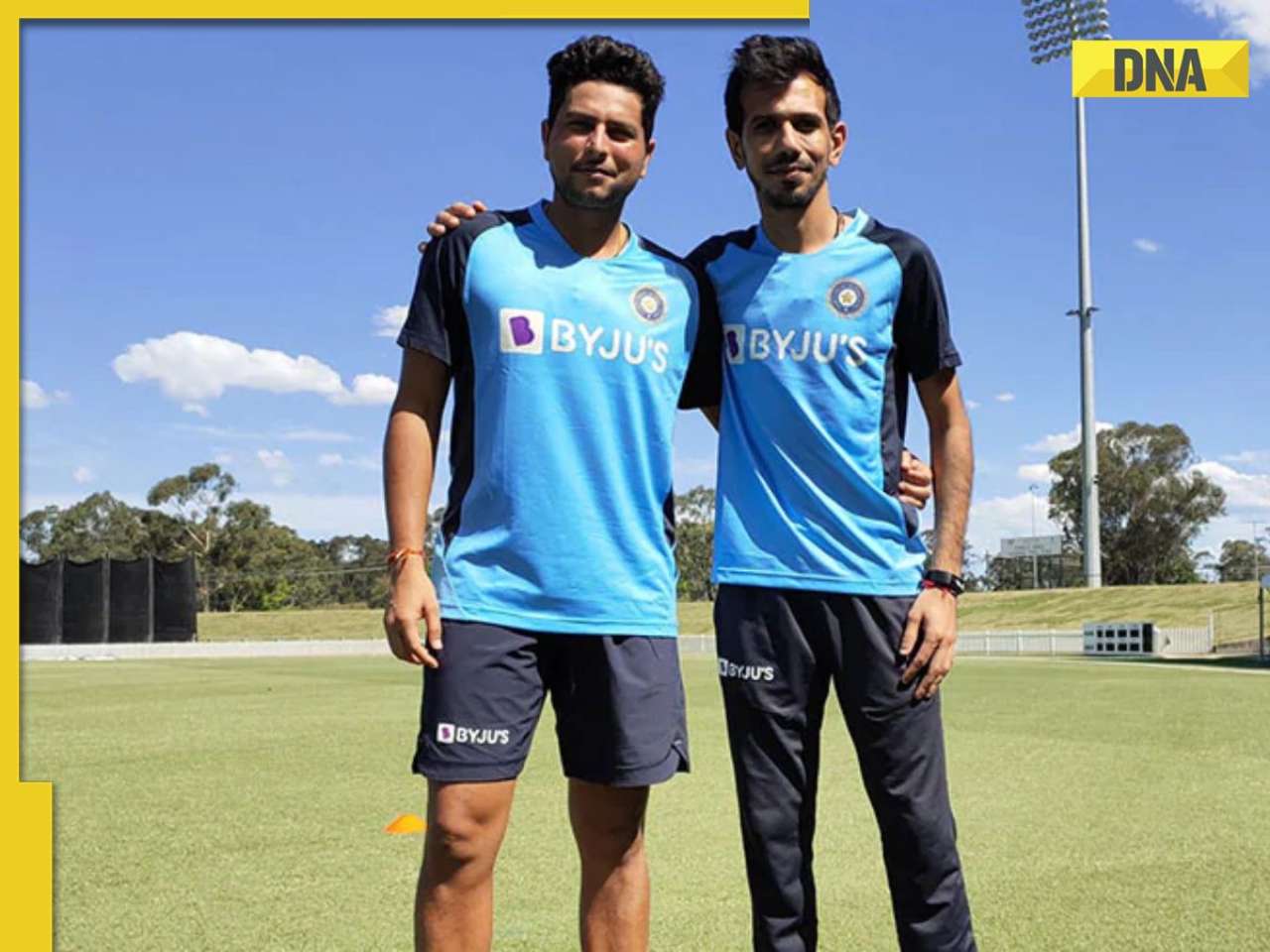What do Mahul creek in Chembur, Nalsarovar lake near Ahmedabad, and Naivasha lake in Kenya have in common?
What do Mahul creek in Chembur, Nalsarovar lake near Ahmedabad, and Naivasha lake in Kenya have in common? Their pink-feathered guests, writes DNA, after visiting all three flamingo habitats.
It was through a small newspaper report that I came to know about the landing of the flamingos in Mumbai for the very first time. The year was 1994, and the place was a fishing village called Mahul, near Chembur.
In order to witness this spectacle, we took a bus to Mahul and got down at the last stop. The local fishermen knew the exact location, and one of them ventured to take us there in his boat. His name was Rajaram Mahulkar, and he remains a dear friend.
As it was low tide, we had to walk to the boat through knee-deep silt that was sticky and black. We later sat dangling our feet over the edge of the boat to wash our legs in the sea water.
Our first sighting of the flamingos was a dampener. As we entered the canal leading to the Arabian Sea, on our right we came across a large group of flamingos, dull grey in colour and ungainly in their gait. Before I could express my disappointment, Rajaram told me that this indeed was only the nursery of fledgling flamingos, where they start their life with dull, grey plumage. It’s only when they become adults and start feeding on the blue-green algae that their feathers start getting the shocking pink hue.
The sight of a kilometre long stretch of a pink, animated line of flamingos, that we encountered a little further down, remains as fresh in my mind as the pink and white feather I picked up that day and preserved as a bookmark in Salim Ali’s Book of
Indian Birds.
A lake of pink
My next encounter with these winged wonders was outside India, and it was out of the world. In Lake Naivasha in Kenya, we saw a congregation of over one lakh flamingos completely covering the lake, shore to shore.
Back home, I met them again at a beautiful water body near Ahmedabad called Nalsarovar Lake. The vast stretches of water had a host of species including Pelicans, but the sheer number of flamingos made it a Flamingo Lake. And how I wished I knew whether even one of those flamingos was the same one that I had seen in Lake Naivasha, and had now migrated all the way from Kenya
To visit us.
The major difference between the flamingos in Mahul and the ones in Nalsarovar was their behaviour. Those in Mahul tended to stay at one place, feeding on the blue-green algae for hours as the tide kept rising. And once their feet got submerged in the rising waters, they took off into the sky, forming gigantic pink clouds. The way they take off is a sight in itself. First they start walking on water, and once they gather enough momentum in their feet, and enough wind in their wings, they take off into the horizon - just like an aeroplane. Their next stop is the coastline of faraway Uran, from where they return only the next morning.
In contrast, the flamingos of Nalsarovar take off and land at the slightest pretext. So, even as you watch them feeding, on some mysterious clue, they would take off in waves of pink, circle around in the sky, and land at a different spot. Only to repeat it after
a while.
The take-off of these birds is very akin in pattern to the call of the cicadas. You don’t know what prompts the cicadas to start. But invariably one of them starts, and all of a sudden, inexplicably, the others join in chorus, and then the sound spreads like the
Mexican wave.
Bird brains
What the flamingos in Mahul and Nalsarovar have in common is their uncanny ability to spot outsiders. When the local fishermen take their boats close to the group they don’t even bat an eyelid; but whenever a group of outsiders try and do the same, they quietly retreat. And you realise that however close you may seem to go, the distance between you and them remains exactly the same!
When we made our second attempt to visit the creeks of Mahul, things had got difficult. What was once an unguarded jetty was now fortified with policemen, post the Mumbai terror attacks. We had to get special permission from the Mumbai Port Trust and the RCF Police Station to visit the place, and it took a lot of convincing.
This time around Rajaram tied his rowing boat to his motor boat and tagged it along. At one point, we anchored the big noisy motor boat, and transferred ourselves to the small quiet one.
And we could go real close without disturbing the birds. Rajaram had looked at the tide when we left the jetty early in the morning, and had predicted that they would fly back to Uran at 9. Sure enough, at the appointed time, there began a single flutter that became a hundred flutters. And lo and behold, these beautiful birds took off in waves, with the morning sun enhancing the colour in their glistening pink feathers.
When I returned from the rejuvenating trip, I saw a newspaper report that oil had spilled into the Mahul creek. It left me with a question: These flamingos could have migrated to any part of the world, but they have chosen to visit us year after year, for the past 15 years. Isn’t it time we returned the favour by preserving their habitat?
![submenu-img]() MBOSE 12th Result 2024: HSSLC Meghalaya Board 12th result declared, direct link here
MBOSE 12th Result 2024: HSSLC Meghalaya Board 12th result declared, direct link here![submenu-img]() Apple iPhone 14 at ‘lowest price ever’ in Flipkart sale, available at just Rs 10499 after Rs 48500 discount
Apple iPhone 14 at ‘lowest price ever’ in Flipkart sale, available at just Rs 10499 after Rs 48500 discount![submenu-img]() Meet man who left high-paying job, built Rs 2000 crore business, moved to village due to…
Meet man who left high-paying job, built Rs 2000 crore business, moved to village due to…![submenu-img]() Meet star, who grew up poor, identity was kept hidden from public, thought about suicide; later became richest...
Meet star, who grew up poor, identity was kept hidden from public, thought about suicide; later became richest...![submenu-img]() Watch: Ranbir Kapoor recalls 'disturbing' memory from his childhood in throwback viral video, says 'I was four years...'
Watch: Ranbir Kapoor recalls 'disturbing' memory from his childhood in throwback viral video, says 'I was four years...'![submenu-img]() DNA Verified: Is CAA an anti-Muslim law? Centre terms news report as 'misleading'
DNA Verified: Is CAA an anti-Muslim law? Centre terms news report as 'misleading'![submenu-img]() DNA Verified: Lok Sabha Elections 2024 to be held on April 19? Know truth behind viral message
DNA Verified: Lok Sabha Elections 2024 to be held on April 19? Know truth behind viral message![submenu-img]() DNA Verified: Modi govt giving students free laptops under 'One Student One Laptop' scheme? Know truth here
DNA Verified: Modi govt giving students free laptops under 'One Student One Laptop' scheme? Know truth here![submenu-img]() DNA Verified: Shah Rukh Khan denies reports of his role in release of India's naval officers from Qatar
DNA Verified: Shah Rukh Khan denies reports of his role in release of India's naval officers from Qatar![submenu-img]() DNA Verified: Is govt providing Rs 1.6 lakh benefit to girls under PM Ladli Laxmi Yojana? Know truth
DNA Verified: Is govt providing Rs 1.6 lakh benefit to girls under PM Ladli Laxmi Yojana? Know truth![submenu-img]() Alia Bhatt wears elegant saree made by 163 people over 1965 hours to Met Gala 2024, fans call her ‘princess Jasmine’
Alia Bhatt wears elegant saree made by 163 people over 1965 hours to Met Gala 2024, fans call her ‘princess Jasmine’![submenu-img]() Jr NTR-Lakshmi Pranathi's 13th wedding anniversary: Here's how strangers became soulmates
Jr NTR-Lakshmi Pranathi's 13th wedding anniversary: Here's how strangers became soulmates![submenu-img]() Streaming This Week: Heeramandi, Shaitaan, Manjummel Boys, latest OTT releases to binge-watch
Streaming This Week: Heeramandi, Shaitaan, Manjummel Boys, latest OTT releases to binge-watch![submenu-img]() Remember Ayesha Kapur? Michelle from Black, here's how actress, nutrition coach, entrepreneur looks after 19 years
Remember Ayesha Kapur? Michelle from Black, here's how actress, nutrition coach, entrepreneur looks after 19 years![submenu-img]() Remember Heyy Babyy's cute 'Angel' Juanna Sanghvi? 20 year-old looks unrecognisable now, fans say 'her comeback will...'
Remember Heyy Babyy's cute 'Angel' Juanna Sanghvi? 20 year-old looks unrecognisable now, fans say 'her comeback will...'![submenu-img]() Haryana Political Crisis: Will 3 independent MLAs support withdrawal impact the present Nayab Saini led-BJP government?
Haryana Political Crisis: Will 3 independent MLAs support withdrawal impact the present Nayab Saini led-BJP government?![submenu-img]() DNA Explainer: Why Harvey Weinstein's rape conviction was overturned, will beleaguered Hollywood mogul get out of jail?
DNA Explainer: Why Harvey Weinstein's rape conviction was overturned, will beleaguered Hollywood mogul get out of jail?![submenu-img]() What is inheritance tax?
What is inheritance tax?![submenu-img]() DNA Explainer: What is cloud seeding which is blamed for wreaking havoc in Dubai?
DNA Explainer: What is cloud seeding which is blamed for wreaking havoc in Dubai?![submenu-img]() DNA Explainer: What is Israel's Arrow-3 defence system used to intercept Iran's missile attack?
DNA Explainer: What is Israel's Arrow-3 defence system used to intercept Iran's missile attack?![submenu-img]() Meet star, who grew up poor, identity was kept hidden from public, thought about suicide; later became richest...
Meet star, who grew up poor, identity was kept hidden from public, thought about suicide; later became richest...![submenu-img]() Watch: Ranbir Kapoor recalls 'disturbing' memory from his childhood in throwback viral video, says 'I was four years...'
Watch: Ranbir Kapoor recalls 'disturbing' memory from his childhood in throwback viral video, says 'I was four years...'![submenu-img]() This superstar was in love with Muslim actress, was about to marry her, relationship ruined after death threats from..
This superstar was in love with Muslim actress, was about to marry her, relationship ruined after death threats from..![submenu-img]() Meet Madhuri Dixit’s lookalike, who worked with Akshay Kumar, Govinda, quit films at peak of career, is married to…
Meet Madhuri Dixit’s lookalike, who worked with Akshay Kumar, Govinda, quit films at peak of career, is married to… ![submenu-img]() Meet former beauty queen who competed with Aishwarya, made debut with a superstar, quit acting to become monk, is now..
Meet former beauty queen who competed with Aishwarya, made debut with a superstar, quit acting to become monk, is now..![submenu-img]() IPL 2024: Jake Fraser-McGurk, Abishek Porel power DC to 20-run win over RR
IPL 2024: Jake Fraser-McGurk, Abishek Porel power DC to 20-run win over RR![submenu-img]() SRH vs LSG, IPL 2024: Predicted playing XI, live streaming details, weather and pitch report
SRH vs LSG, IPL 2024: Predicted playing XI, live streaming details, weather and pitch report![submenu-img]() IPL 2024: Here’s why CSK star MS Dhoni batted at No.9 against PBKS
IPL 2024: Here’s why CSK star MS Dhoni batted at No.9 against PBKS![submenu-img]() SRH vs LSG IPL 2024 Dream11 prediction: Fantasy cricket tips for Sunrisers Hyderabad vs Lucknow Super Giants
SRH vs LSG IPL 2024 Dream11 prediction: Fantasy cricket tips for Sunrisers Hyderabad vs Lucknow Super Giants![submenu-img]() Watch: Kuldeep Yadav, Yuzvendra Chahal team up for hilarious RR meme, video goes viral
Watch: Kuldeep Yadav, Yuzvendra Chahal team up for hilarious RR meme, video goes viral![submenu-img]() Not Alia Bhatt or Isha Ambani but this Indian CEO made heads turn at Met Gala 2024, she is from...
Not Alia Bhatt or Isha Ambani but this Indian CEO made heads turn at Met Gala 2024, she is from...![submenu-img]() Man makes Lord Hanuman co-litigant in plea, Delhi High Court asks him to pay Rs 100000…
Man makes Lord Hanuman co-litigant in plea, Delhi High Court asks him to pay Rs 100000…![submenu-img]() Four big dangerous asteroids coming toward Earth, but the good news is…
Four big dangerous asteroids coming toward Earth, but the good news is…![submenu-img]() Isha Ambani's Met Gala 2024 saree gown was created in over 10,000 hours, see pics
Isha Ambani's Met Gala 2024 saree gown was created in over 10,000 hours, see pics![submenu-img]() Indian-origin man says Apple CEO Tim Cook pushed him...
Indian-origin man says Apple CEO Tim Cook pushed him...

















































)
)
)
)
)
)